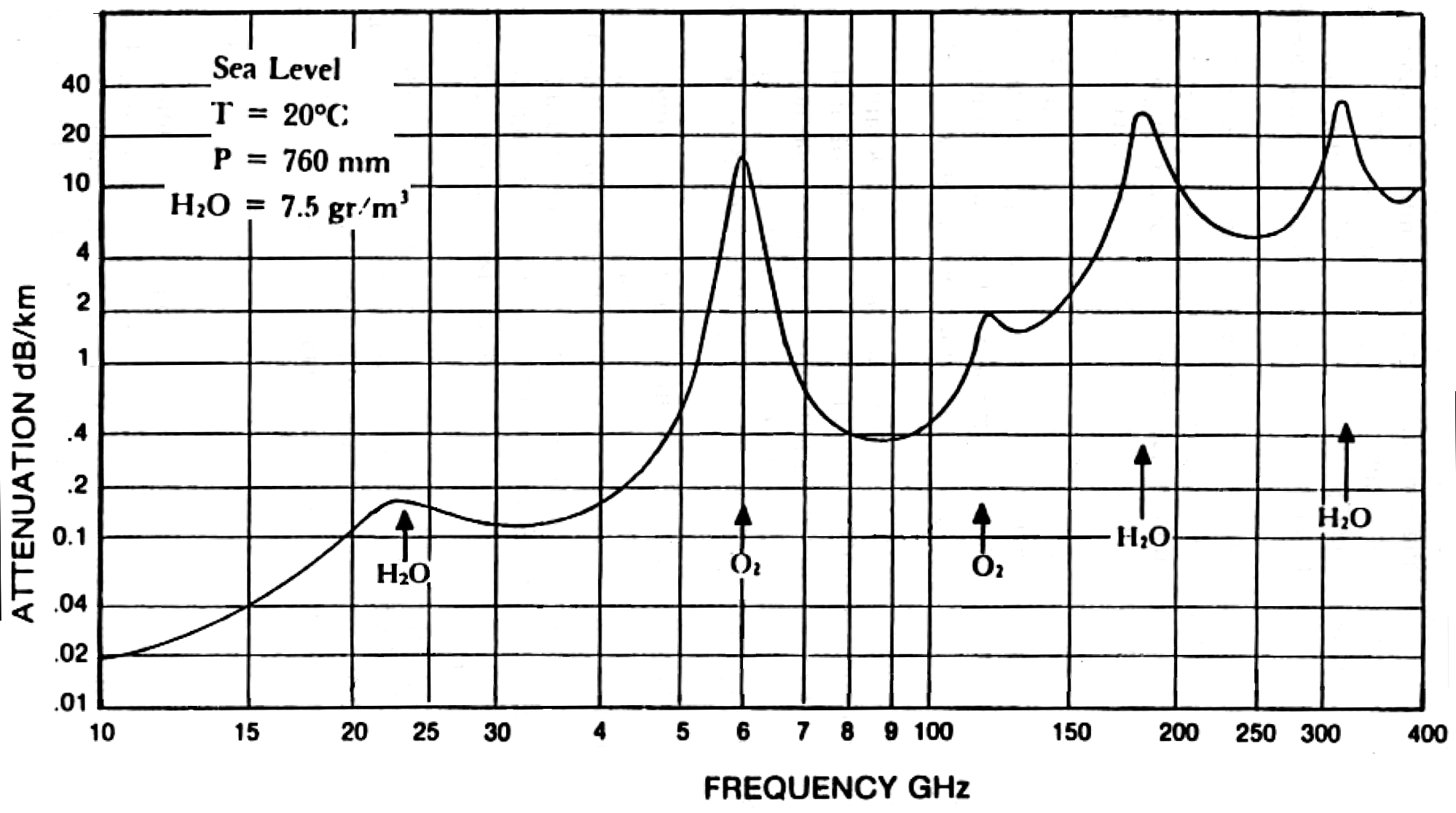|
Size: 947
Comment:
|
Size: 1260
Comment:
|
| Deletions are marked like this. | Additions are marked like this. |
| Line 10: | Line 10: |
| Line 13: | Line 16: |
[[ http://www.itu.int/dms_pubrec/itu-r/rec/p/R-REC-P.618-6-199910-S!!PDF-E.pdf | RECOMMENDATION ITU-R P.618-6 ]] PROPAGATION DATA AND PREDICTION METHODS REQUIRED FOR THE DESIGN OF EARTH-SPACE TELECOMMUNICATION SYSTEMS Satellite Communication Fundamentals Kadish and East Artech 2000 chapter 11 (have) |
Path Attenuation due to Orbital and Latitude Elevation
|
The atmosphere attenuates microwaves. This graph is from FCC bulletin 70, Millimeter Wave Propagation: Spectrum Management Implications , July 1997. |
The effective depth of the atmosphere ( Sea level pressure divided by sea level density and gravity ) is 8.5km, and microwaves arriving from space at an elevation angle of E travel through 8.5 / cos(E) kilometers of atmosphere. The attenuation trends upwards with frequency, with absorption peaks at frequencies where oxygen or water molecules resonate. The attenuation at 70GHz is 0.79dB/km, so the attenuation is 6.32 dB / cos(E), a factor of 4.29 at zenith (E = 90 °) and 18.4 at 30 ° elevation.
Find thinsat density versus elevation
RECOMMENDATION ITU-R P.618-6 PROPAGATION DATA AND PREDICTION METHODS REQUIRED FOR THE DESIGN OF EARTH-SPACE TELECOMMUNICATION SYSTEMS
Satellite Communication Fundamentals Kadish and East Artech 2000 chapter 11 (have)

